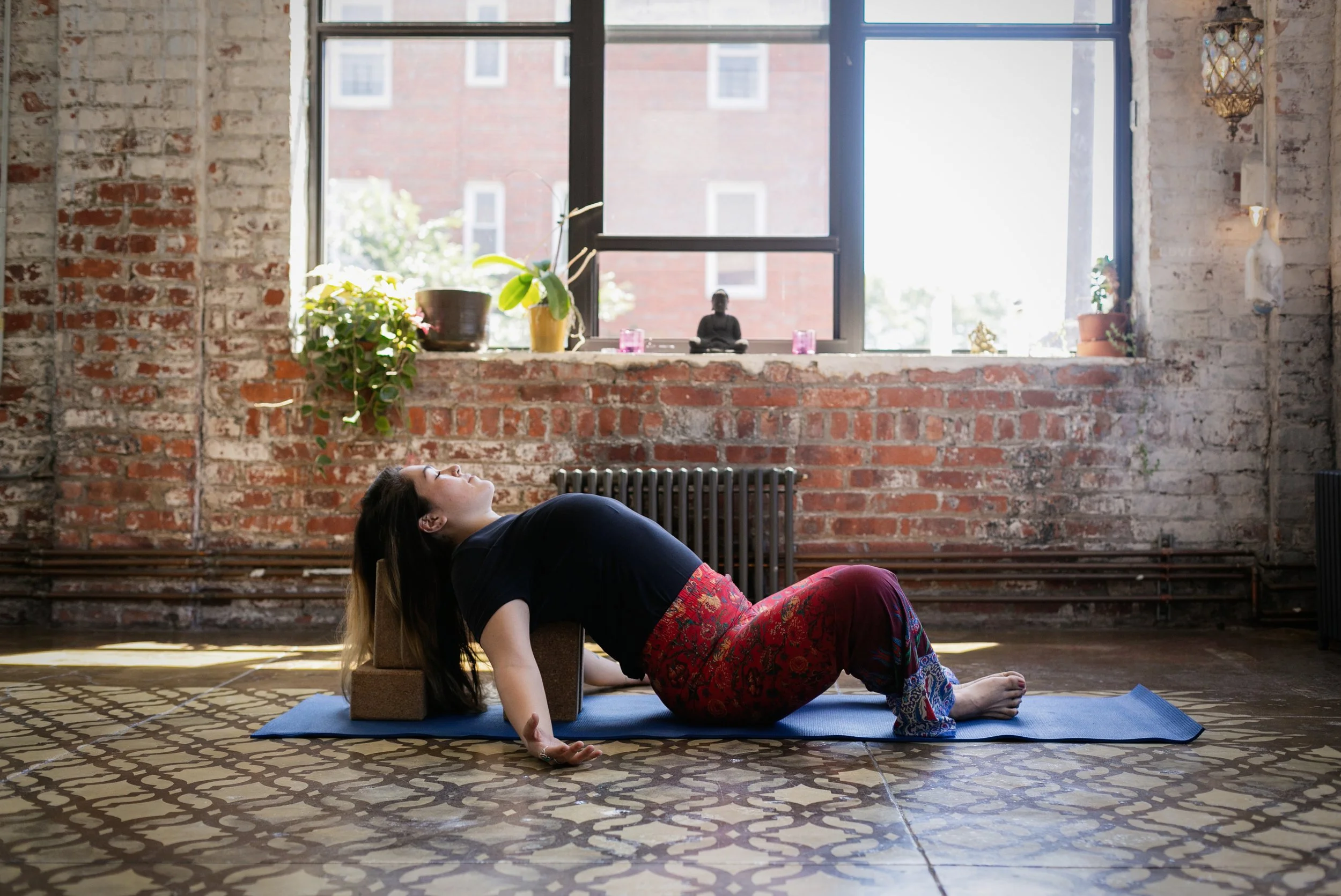How Yin Yoga Complements a Vinyasa Practice
If you love the flowing movement and energy of Vinyasa yoga, you might not think that a slow, still practice like Yin Yoga would be necessary. But what if I told you that adding Yin to your routine could enhance your Vinyasa practice—making you stronger, more flexible, and better balanced overall?
Many practitioners in Brooklyn’s yoga community are discovering the benefits of combining these two seemingly opposite styles. Here’s why Yin Yoga is the perfect complement to Vinyasa.
The Yin and Yang of Yoga
In traditional Chinese philosophy, Yin and Yang represent opposing but complementary forces. Yang is active, energetic, and outward-moving, while Yin is passive, still, and inward-focused.
- Vinyasa Yoga = Yang – Dynamic, heat-building, muscular, and strength-focused
- Yin Yoga = Yin – Slow, cooling, deep-stretching, and meditative
Balancing both styles in your practice ensures you’re not overworking your muscles while neglecting deeper connective tissues, joints, and mental stillness.
1. Improves Flexibility for a Stronger Vinyasa Flow
Vinyasa yoga involves a lot of active stretching—you engage muscles while lengthening them. However, Yin Yoga takes a different approach by targeting fascia, ligaments, and deep connective tissues.
Holding Yin poses for several minutes helps to:
✅ Increase range of motion for deeper backbends and hip openers
✅ Release stiffness that can restrict movement in your flow
✅ Prevent injury by improving joint mobility
This means your Downward Dog, Warrior Poses, and Chaturangas will feel more fluid and open.
2. Aids Muscle Recovery and Injury Prevention
Vinyasa is great for building strength and endurance, but it can also lead to muscle tightness—especially in areas like the hamstrings, hips, and shoulders.
By integrating Yin Yoga into your routine, you allow your body to:
🔹 Recover faster from intense Vinyasa sessions
🔹 Soothe tired or overworked muscles
🔹 Reduce inflammation and prevent repetitive stress injuries
Think of Yin as a reset button for your body after vigorous movement.
3. Deepens Mindfulness and Breath Control
During a fast-moving Vinyasa class, your focus is often on alignment and breath coordination in motion. But in Yin Yoga, where poses are held for 3-5 minutes, you have time to:
✨ Refine your breathwork and train yourself to breathe through discomfort
✨ Cultivate patience and mental stillness
✨ Become more mindful and present in your practice
These skills translate directly to your Vinyasa practice, making each flow more intentional and centered.
4. Helps with Stress Reduction and Nervous System Balance
Vinyasa activates the sympathetic nervous system (fight-or-flight response), boosting energy and focus. But too much Yang energy without balance can lead to burnout, fatigue, and stress.
Yin Yoga, on the other hand, activates the parasympathetic nervous system (rest-and-digest mode), helping to:
💆 Reduce stress and anxiety
💆 Improve sleep quality
💆 Restore overall balance in the body
If you’re feeling overworked, mentally exhausted, or physically sore, Yin can bring you back to a place of calm and equilibrium.
How to Add Yin Yoga to Your Routine
If you’re practicing Vinyasa 3-5 times a week, consider adding 1-2 Yin sessions to maintain balance. Many Brooklyn yogis love taking a Yin class on their rest day to help with recovery and flexibility.
At Yoga Tribe Brooklyn in Brooklyn, 11226, we offer both Vinyasa and Yin Yoga classes to help you create a well-rounded practice. Whether you want to enhance flexibility, prevent injuries, or simply slow down, Yin Yoga perfectly complements your active lifestyle.
Join us and experience the beautiful balance of Yin and Yang on the mat!


